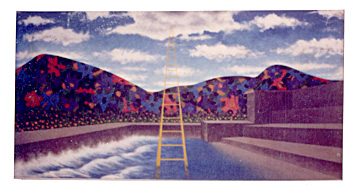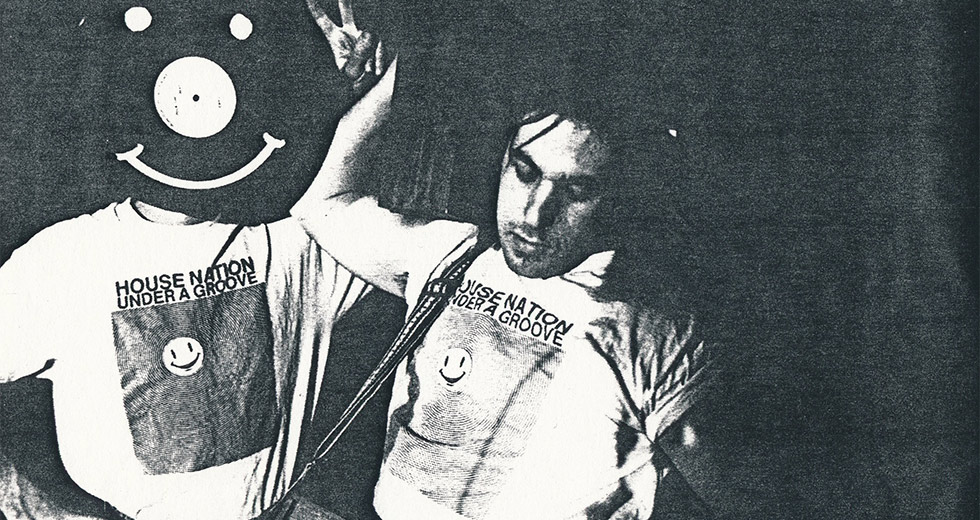Prince’s Around The World In A Day: A Reappraisal
Released only two weeks after the conclusion of the Purple Rain tour at the Orange Bowl in Miami, Prince’s seventh studio album Around the World in a Day occupies a curious position in his discography. The Purple Rain phenomenon – an ambitious multimedia event encompassing a blockbuster film, a multi-million selling album and an extensive US tour – had brought the Minneapolis artist his greatest commercial success to date. He had penetrated the mainstream with an album of electronically enhanced mutant rock & roll, a motion picture revolving around a gifted but arrogant upstart with an abusive family background, and a stage production that for all its glitz and professionalism still erred towards the perverse, as illustrated by a set-piece involving a large purple bathtub.
Prince had made it, on more or less his own terms. But even before the Purple Rain tour made its way from city to city, state to state, the diminutive figure at its centre had been working on material that would initiate a new phase of his career, one which was less about financial reward and adoration, and more about doing whatever the fuck he had to do in order to scratch his creative itch – even if that meant the eventual dissolution of his band and the gradual dwindling of the commercial profile he had gained with Purple Rain. Because he hated repeating himself. Because he couldn’t abide boredom. But above all, because he was Prince, and that’s how he rolled.
The encores of The Purple Rain tour began to last for hours.
“The Purple Rain tour was so tied to the film and the music videos which had become so popular on MTV that he was obligated to replicate those things onstage,” says Alan Leeds, Prince’s tour manager from 1983 to 1989. “What that meant was the tour was very theatrical, very produced, and that’s always at the expense of spontaneity. He really, really got tired of performing that show because it became horribly routine to him. The encores were the only time when he could really stretch out and they began to last for hours.”
Much of the music that made it onto Around the World in a Day had been completed prior to the release of Purple Rain. The remainder of the album was recorded prior to and in some cases during the tour at a variety of locations including Sunset Sound in Los Angeles and a mobile audio truck taken on the road. Engineer Susan Rogers witnessed the rapid evolution of Prince and The Revolution’s sound and visual aesthetic while working on new tracks at Flying Cloud Drive Warehouse, Eden Prairie, in 1984.
“I suppose we were aware that Prince would not repeat himself artistically,” says Rogers. “There were new clothes, new colours, new personnel and a new way of working. While the Paisley Park studio complex was in the planning I recorded the band from their rehearsal stage in our leased warehouse. This allowed him to record the whole band easily, so Prince could stay home for longer stretches of time. His personal and recording lives were more coincidental than perhaps he chose to make them in the past.”
When you see someone with total focus and the energy that he exuded, it wakes you up and makes you concentrate.
Rogers notes the conspicuous absence of the colour purple in the band’s new wardrobe around this time, as well as the growing cast of auxiliary players that included David Coleman and Michael Melvoin (siblings of The Revolution’s Lisa Coleman and Wendy Melvoin) along with cellist Suzi Katayama, violinist Novi Novog and saxophonist Eddie Minnifield aka Eddie M. As Rogers suggests, Prince was indeed seeking to expand his palette. He had already employed Novog and Katayama on Purple Rain, most notably on the astonishing - and according to Novog, largely improvised - ambient coda to the album’s title track.
“He was serious, but it was fun,” says Novog of the sessions. “Because when you see someone with total focus and the energy that he exuded, it wakes you up and makes you concentrate. You all get on the same wavelength. A couple of times when he wasn’t there and it was just Wendy and Lisa, it was still focused but it was maybe a little more light and frivolous. There was a different attitude. Although those guys got a lot of work done.”
The greater involvement of string players marked a development that would be further advanced in association with veteran bandleader, composer and arranger Clare Fischer. This long distance collaboration (the pair never met) began during recording sessions for the debut album by Prince proteges The Family in late 1984 and lasted until 2006’s 3121. Significantly, The Family were co-fronted by Wendy Melvoin’s twin sister and Prince’s on-off girlfriend, Susannah Melvoin, who contributed backing vocals to Around the World in a Day and reputedly inspired its highlight “Condition of the Heart.”
We’d start with the drum machine and I wouldn’t leave the studio until it was mixed. That could be 24, 48 hours, and on a couple of occasions we got into about 72, 76 hours.
British engineer David Tickle was also involved in the recording of the new material. Tickle had worked front-of-house sound for the Purple Rain tour and mixed some of the singles taken from the soundtrack. As with Susan Rogers, this was the first time he had been involved in a Prince album from its inception.
“There was no clear objective with what the next album was going to be,” says Tickle. “It wasn’t like it started out and it was gonna be this specific focus. Prince would literally write a song a day and every three days or so we would go and do a full production on something. If you listen to the album, there’s actually quite a difference in the context of the songs themselves, and even in production and sonic value. That’s because when you worked with Prince what happened was he would say, ‘David. I’ve got a song. Get a studio’ - maybe after a show one night, or we may have a couple of days off. We’d start with the drum machine and I wouldn’t leave the studio until it was mixed. Right from the first bass drum being printed. That could be 24, 48 hours, and on a couple of occasions we got into about 72, 76 hours. Without going to sleep. That was his thing. You go in, you start it, and you don’t leave until it’s done. And that moment in time is encapsulated.”
“He saw that some of his music had an expiration date on it,” adds Alan Leeds, “and that whatever moods and thoughts that went into the new music were timely enough that he wanted people to hear them as quickly as possible.”
Prince worked fast, which frequently impacted on the sonic clarity of his work. Dirty Mind famously consisted of demos, and later, Sign O’ the Times raised critical eyebrows due to its use of similarly rough recordings. Prince’s early ‘80s productions – from the work released under his own name to that of The Time, Sheila E and Apollonia 6 – tended to be far from immaculate, their raw energy justifying the punk-funk tag some critics attached to the early Minneapolis sound. Whereas Purple Rain was a notch above previous releases in terms of sound quality – largely due to the demands of its accompanying film – Around the World in a Day is characterised by the variation in audio fidelity from track to track.
“Some of it is raggedy,” says Tickle. “It doesn’t sound like it was done super high end in a studio, particularly at that time, when a lot of stuff was very pristinely recorded. That’s why everything is so unique. We’d go in, do a song and once it was done, we’d leave it.”
For much of the album we were recording in a warehouse with no isolation between sound sources and an inferior signal path.
As Susan Rogers explains, there were technical issues that contributed to the album’s spontaneous feel: “Prince owned a fantastic multitrack tape machine, the Ampex MM1100, that finally reached the end of its life, so we replaced it with an MCI JH24. It couldn’t compete with the Ampex sonically but it was more reliable. For much of the album we were recording in a warehouse with no isolation between sound sources and an inferior signal path, compared to what we had at Sunset Sound in Los Angeles.”
In contrast to the logical sequencing and narrative flow of Purple Rain, the new album was, as its title suggests, all over the place. The opening title track was originally composed and recorded by David Coleman and is notable for its non-Western instrumentation. Oud, darbuka and finger cymbals are layered atop a booming Linn M-1 machine rhythm while Prince promises “a wonderful trip through all time.” Coleman was well-versed in Middle Eastern musics but most critics of the time traced these sounds as far back as (cough) The Beatles. Close behind, the ostensibly positive message of “Paisley Park” is delivered in a nursery rhyme lilt over mogadon beats and sheets of feedback. It’s one of Prince’s eeriest tunes and least remembered singles, “The mission is easy / Just say U believe” sounding more like a Jim Jones-like invitation to imbibe the Kool Aid than anything remotely comforting.
The album’s biggest hit, the lascivious but sweetly nostalgic “Raspberry Beret,” finds Prince at his most winsome and whimsical. Its scenario recalls “Little Red Corvette” but also finds time for a subtle acknowledgement of racism in the first verse: “He told me several times that he didn’t like my kind / ‘Cause I was a bit 2 leisurely,” sings Prince of his old boss, Mr McGee. The line is lent a piquant irony by the fact that it’s delivered by one of pop’s most infamous workaholics. The video for the song is a mini-classic in which Prince avoids eye contact with the camera for the duration and prefaces his vocal intro with a coughing fit. “I just did it to be sick, to do something no one else would do,” he told Rolling Stone, gesturing at the wayward urges that fuelled the entire album project and his subsequent career.
The album concludes with Prince condemned to Hell, addressing his audience in pitiful tones.
Perhaps the most impressive of the album’s nine tracks is “Condition of the Heart.” The ballads on Prince’s first two albums approached love from the adolescent perspective of one who had yet to experience it; from Controversy onward, they tended to be erotically charged and laden with irony or, like “The Beautiful Ones” and “Purple Rain,” set pieces with a dramatic purpose. Here, Prince sounds genuinely bereft: “There was a dame in London who insisted that he love her / Then left him 4 a real prince from Arabia / Now wasn’t that a shame / That sometimes money buys U everything and nothing / Love, it only seems to buy a terminal condition of the heart.” Lyric aside, the song’s backing track – a florid fusion of piano, minimal percussion and synthesizer – sounds like nothing less than heartache itself.
An experimental album released in the wake of mainstream success, it’s no surprise that Around the World in a Day is flawed. The political orientation of a couple of tracks subvert the popular idea that the album has anything to do with the LSD-fuelled radicalism of the 1960s: the taut, bouncy “Pop Life” may be one of his best singles and feature one of his funniest lyrics (especially in its extended 12-inch form, which incorporates additional verses) but its central assertion that “Everybody can’t be on top” conjures up the wholly unappealing concept of Prince as a funky Ayn Rand; the uptempo jam “America” meanwhile takes great pleasure in its unironic denunciation of Communism, pushing the patriotism of 1999’s “Free” into even less palatable territory.
Less contentiously, “The Ladder” seems designed to be the album’s centrepiece but is in fact a big red herring, a hollow inflation of “Purple Rain”s epic neo-gospel balladry which gives the impression of lasting three times its length. “Temptation” is too self-consciously raunchy, a sax-assisted bump ‘n’ grind accompanied by a lyric unusually devoid of wit or charm; it’s damning (no pun intended) that the song only becomes interesting with the entrance of God, who sentences his subject to death for his inability to distinguish love from lust. The album concludes with Prince condemned to Hell, addressing his audience in pitiful tones: “I have 2 go now… I don’t know when I’ll return… goodbye.” Though hard to love, “The Ladder” and “Temptation” are crucial to Prince’s extended mythos, foreshadowing the conflict and resolution between the carnal and the spiritual that provided 1988’s Lovesexy with its central theme.
Wendy and Lisa had years of formal musical training so they brought new harmonies and chord progressions to his work.
The tracks which found their way onto b-sides are superior to some included on the album. The unusually candid “Hello,” addresses Prince’s critics on subjects including his bodyguards (“I call them my friends”), his non-participation in USA For Africa’s “We Are The World” charity single (“I tried 2 tell them that I didn’t want 2 sing / But I’d gladly write a song instead”) and the paparazzi (“Up yours! That’s right! You’re a star!”). Later covered by D’Angelo, “She’s Always In My Hair” is considered not only one of Prince’s greatest b-sides but one of his finest songs, reputedly written about collaborator, Purple Rain co-star and former girlfriend Jill Jones; best of all, “Girl” is an erotic synth fantasia as tender as it is pornographic (“If I was anything else I’d be the water in your bath, darlin’”).
Thanks to their memorable roles in Purple Rain, guitarist Wendy Melvoin and keyboard player Lisa Coleman had become the most identifiable members of The Revolution aside from Prince himself. More importantly they were increasingly responsible for the character of the music. The duo’s advanced musicality and distinctive harmonic approach meant that they were being called on to enhance and in some cases complete Prince’s compositions (a reversal of the process depicted in Purple Rain). Those who wonder where the sound of The Revolution escaped to following the band’s dissolution are encouraged to investigate the duo’s own discography. “Wendy and Lisa had the years of formal musical training that Prince lacked so they brought new harmonies and chord progressions to his work,” says Susan Rogers. “Prince wisely gave them opportunities to write string and backing vocal arrangements, as well as their own guitar and keyboard parts.”
“They had more input,” agrees David Tickle. “Prince would put down a drum machine, do some kind of guide vocal, because he may not have figured out all of his vocal moves yet, then say to Wendy and Lisa, ‘Hey, you go and put background vocals on this’ and we’d build the thing up for him.”
Critical reception to the album was mixed. Much of it hinged on the perception that Prince was attempting a naked homage to late-period Beatles, while the Jimi Hendrix comparisons invited by his guitar heroism and flamboyant appearance circa Purple Rain continued unabated. New York Times rock critic Robert Palmer wrote at the time that “Prince is risking charges of imitation and excessive eclecticism by deliberately invoking so many icons of ’60s rock.” In truth, it’s a struggle to find anything on the album that sounds much like “Tomorrow Never Knows,” “I Am the Walrus” or “A Day in the Life,” not least because so much of it is underpinned by the precise thud and snap of the Linn M-1. Neither does the album resemble the psychedelic soul and funk of the The Temptations, Funkadelic or The Undisputed Truth. If this was psychedelia, then it had more in common with the variety peddled by US bands like The Rain Parade, The Three O’Clock (who released their fourth album Vermilion on Paisley Park in 1988) and The Bangles (who released their version of Prince’s “Manic Monday” in 1986), all of whom had been grouped into a movement known as The Paisley Underground.
“There are these little calliope sounds and instruments that may remind you of a couple of things that the boys and George Martin did,” says Alan Leeds. “But I’m 68 years old, my life experience with popular music goes back to the late ‘50s. I knew what [The Beatles and Hendrix] meant culturally to my generation and it wasn’t nearly the same thing as what Prince meant. First of all, we were all stoned the entire time! Whether you were making the music, playing on stage or in the audience. Everybody was fucked up! And nobody in the Prince camp was stoned!”
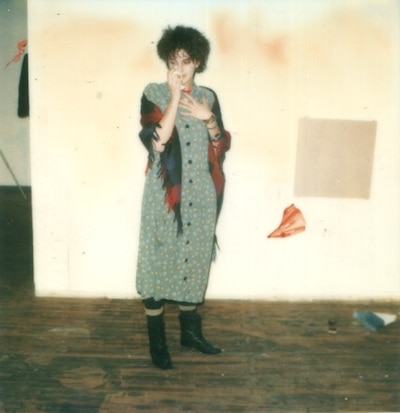
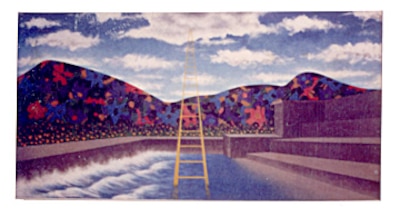
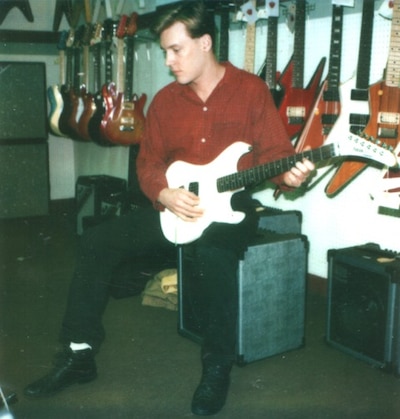

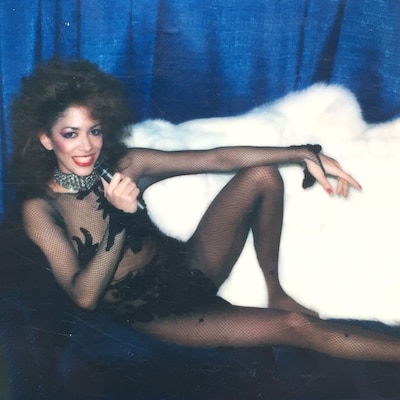
It’s true that the album’s sleeve art – a colourful depiction of characters and images taken directly from the songs – did little to dispel this impression. Artist Doug Henders, who worked on the Purple Rain movie and tour, providing the Pierrot-like faces that adorned both The Kid’s basement and the stage set, as well as taping each live show for Prince’s later inspection, confesses that his cover painting for the gatefold sleeve was indeed inspired by Sgt. Pepper’s Lonely Hearts Club Band.
“Prince gave me a laundry list,” says Henders. “Old woman crying; a clown juggling the earth; a ladder going to heaven. So I could do it two ways: a collage or a surrealistic landscape, and [the latter] is what I chose, kind of a la Sgt. Pepper’s. I did that on the road, while I was on the Purple Rain tour. I would go early to the arena, arrange the stage, because a lot of the artwork was on the stage, set up my camera, shoot the show and the videos would go to him right after the show. Then he would have parties in his hotel suite in whatever city, and some people were prisoners and some people were guests. I ended up going back to my hotel room and painting all night long. After two weeks I got pretty burned out and I hired someone to take my place shooting video. I rented a hotel in Los Angeles and finished the painting. I made Prince’s management buy it an airline seat because we couldn’t trust them to put it below.”
The six-piece band that had been his template... it was clear that he had outgrown that format.
There was no tour to support the new album, but the process of its creation would prove catalytic for The Revolution live and in the studio. The use of additional musicians like Eddie M, Suzi Katayama and Novi Novog demonstrated to Prince what might be possible were he to loosen the restrictions placed upon his music by the six-piece rock ensemble format, and awakened him to the tonal and textural possibilities of brass and string instruments.
“He was clearly thinking outside the box of The Revolution,” says Alan Leeds. “The six-piece band that had been his template since he first organised it with [bass guitarist and childhood friend] Andre Cymone, the instrumentation of which had remained the same throughout the personnel changes from Dez [Dickerson, ex-Revolution guitarist] to Wendy and so on, it was clear that he had outgrown that format. He had Eddie M on saxophone, not really playing a significant part, but certainly a hint that there would be a space for that kind of texture and flavour in the music he wrote. I think that those of us who were paying attention could see what was next.”
Prince returned to touring in support of his eighth album Parade and its cinematic counterpart Under the Cherry Moon. The Revolution that hit the road in 1986 incorporated additional guitarist Miko Weaver, Susannah Melvoin on backing vocals, saxophonist Eric Leeds, trumpet player Matt ‘Atlanta Bliss’ Blistan, and dancers Wally Safford, Greg Brooks and Jerome Benton (formerly Morris Day’s “valet” in The Time). Soon after the completion of this tour, which saw a number of disputes arise amongst the band members, Prince dissolved The Revolution for good.
“The irony is that The Revolution welcomed the augmentation on Around the World because it tended to be people doing things that they couldn’t do,” Leeds notes. “The core members of The Revolution saw these augmentations as temporary, for the purposes of the record. But when Parade came along and all of a sudden there were two horn players and three background singers and eventually another guitarist onstage, who had become full-blown members of the band, they were a little disappointed I think.”
It’s not that Around the World in a Day deserves to be hailed as a lost classic. Rather that it deserves to be recognised as the genesis of deeper and darker work to come. The textural and structural innovations that would come to fruition with the spectacular late ‘80s trilogy of Parade, Sign O’ the Times and Lovesexy have their origins within this curious artefact. It’s equally arguable that this was the point at which Prince’s artistic impulses first began to chafe against the expectations of his record company.
“My hunch is that Prince conceived of the album as a gesture sketch because he wanted to experiment stylistically,” says Susan Rogers. “Purple Rain represented a new point in his commercial success and so its follow up needed to promote a new direction if longevity was the goal. Around the World in a Day was the interim record while later works were incubating.”
Prince told Detroit DJ The Electrifying Mojo in June 1985, “I was making something for myself and my fans.” For his fans? Perhaps. For himself? Definitely. This album, more than any other in Prince’s discography, offers a rare glimpse of an artist figuring out his future.
